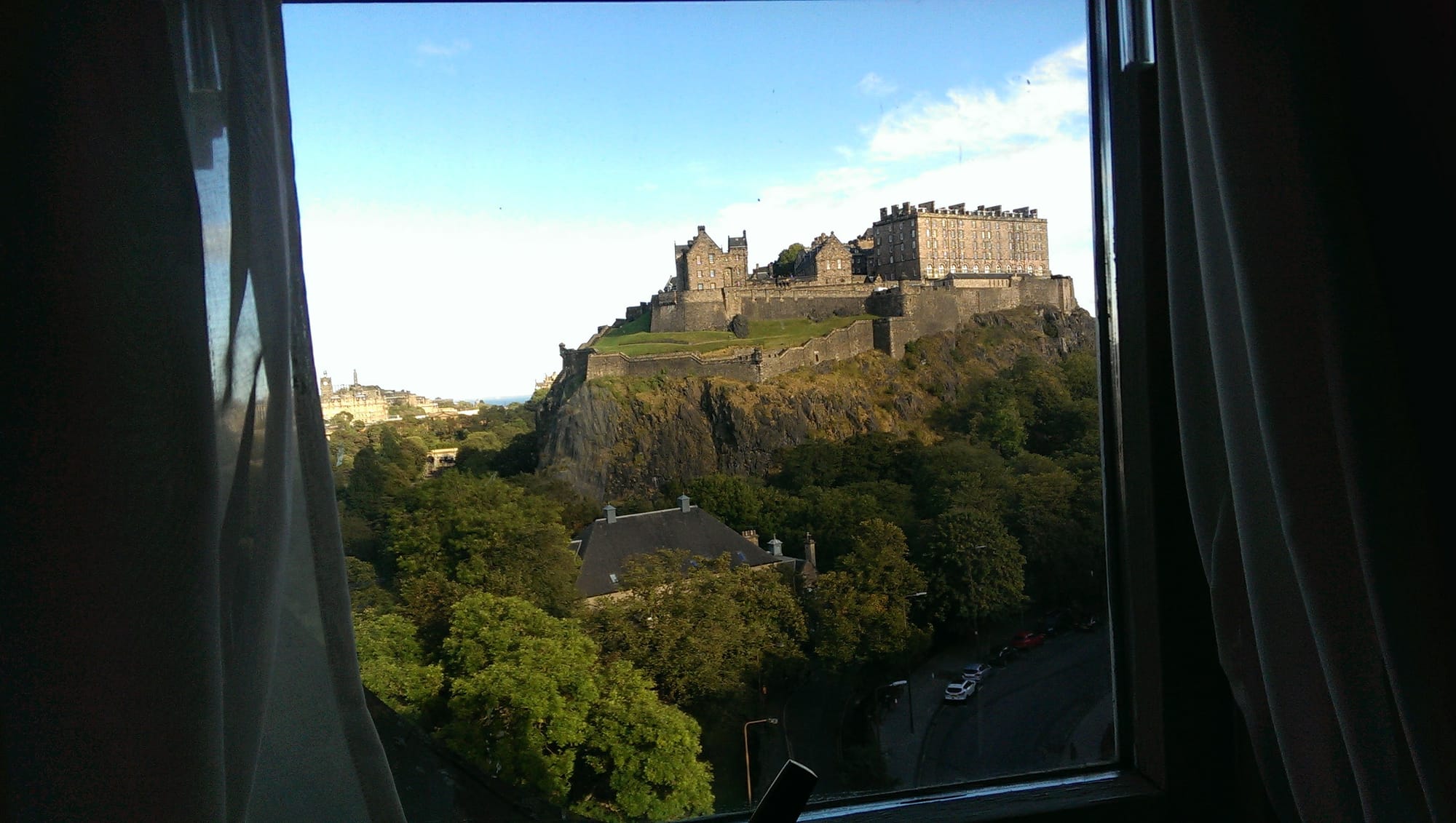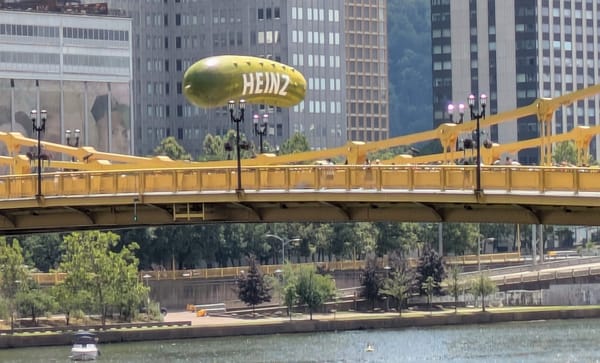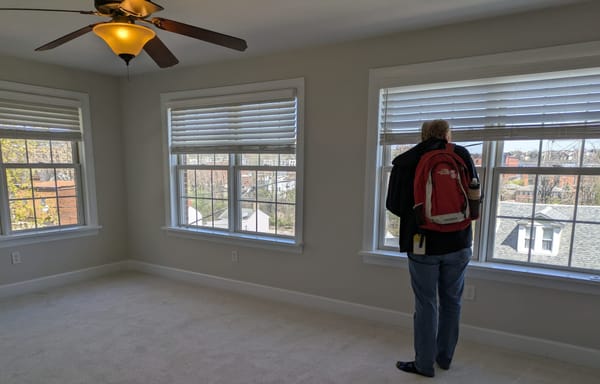Vertical
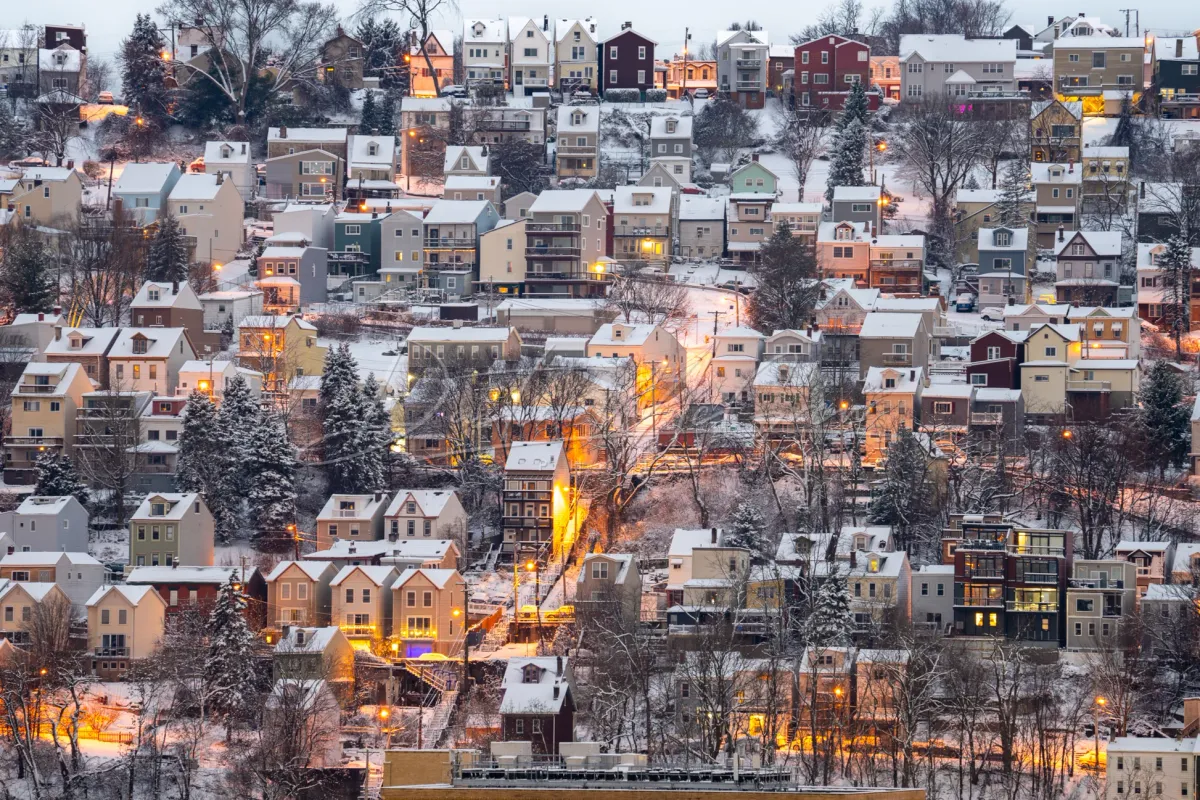
This post will not be long ... but it will be tall.
Pittsburgh is divinely, interestingly weird. Most American cities are horizontally sprawled across a plain, but Pittsburgh is uniquely, defiantly vertical. And that's a big part of its charm.
The Terrain
Pittsburgh has some elevation. The difference between the lowest and highest points in the city is about 700 ft. But it is not a "city on a hill", where the richest people live on some grand, flat Plateau of the Ruling Class that overlooks the Valley of the Workers.
Oh no. That would be too easy.
Instead, Pittsburgh is like an egg carton ... or, more precisely, an upside-down egg carton ... with many high points and valleys. Sometimes the slopes of Pittsburgh can handle houses, as the South Side Slopes (pictured above).
But many slopes cannot. They are just too steep. And therefore, there are vast swaths of Pittsburgh that are green and uninhabited, but not barren in the way that undeveloped.
Instead they are green and lush, and deer hop and down the hills, then into your yard to eat the begonias.
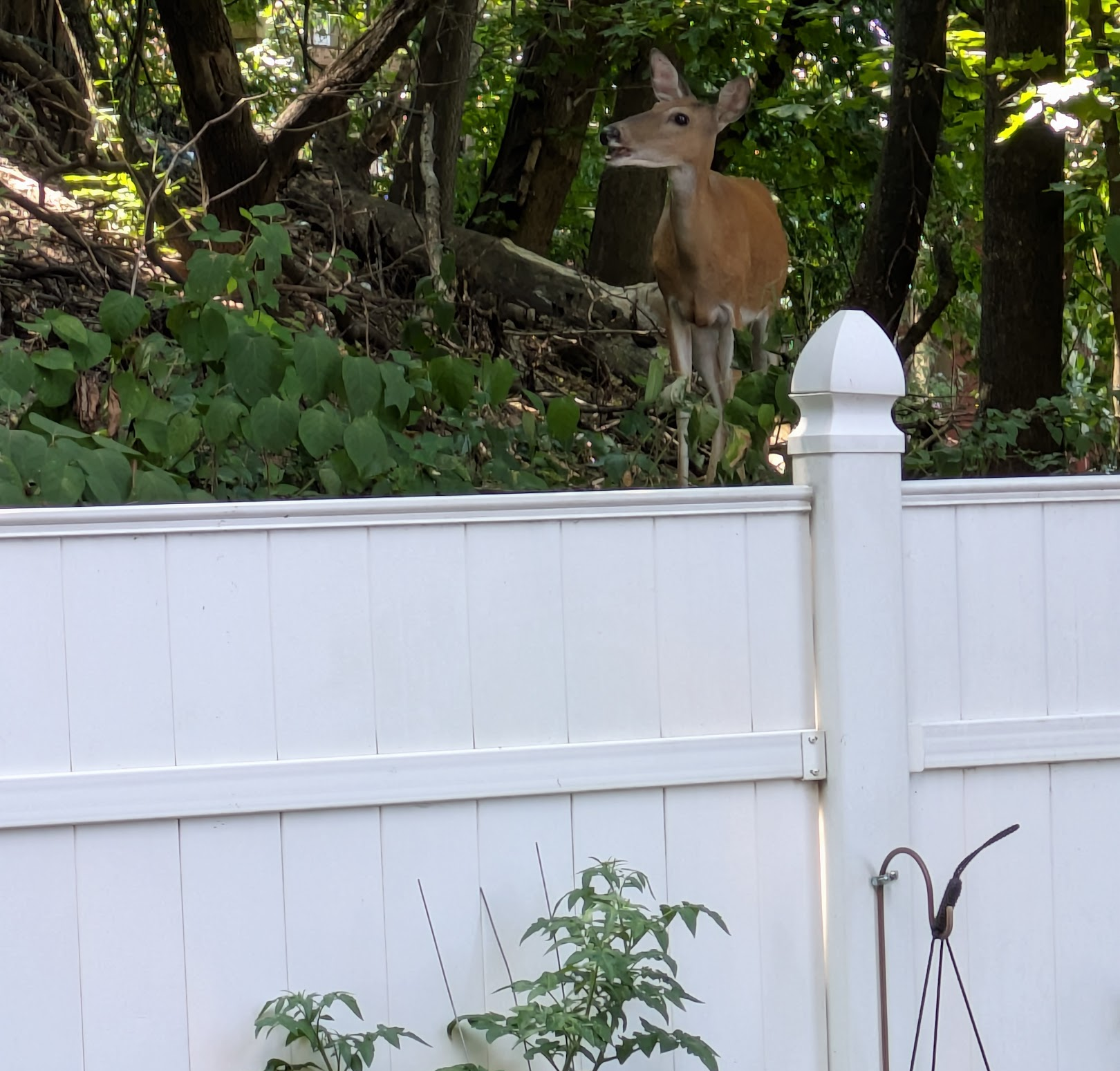
This rough and hilly terrain affects how you see Pittsburgh from a sidewalk, a car, or a bicycle. You are in a city of over 300,000 people, over 2.4 million if you count the burbs. But as you are piloting around, you think "Where is everybody? Where is Pittsburgh?" You feel like you are in the country, or perhaps a small town. The answer is ... the rest of Pittsburgh is over that next hill, the hill with houses that you cannot see beyond.

In most cities, 6-lane highways and interstates cut up the city into manageable pieces. If you want to combine or reassemble the pieces, you just change the roads. As they learned in Rochester, New York, if you tear down the interstate, a vestige of 1960's urban planning, you immediately change the character of the city "underneath."
But in Pittsburgh, the topography defines the neighborhoods. If a humongous hill separates your neighborhood with the one 6 blocks away, you are pretty much stuck with that boundary. You cannot hope to change them.
Bridges, Tunnels and Steps
Not that they don't try. You have to hand it to the early citizens of Pittsburgh. They were engineers, although a little crazy. A sane person would have looked at the terrain of pre-Pittsburgh and said, "Meh, I think I'll move the city somewhere else. This is too hard."
Not the enterprising proto-Yinzer. When they saw a steep hill they built steps over it. There are more public staircases in Pittsburgh than any city in the United States - over 800 of them. Some of them have been painted with murals, which I find really appealing. This one is in my neighborhood.
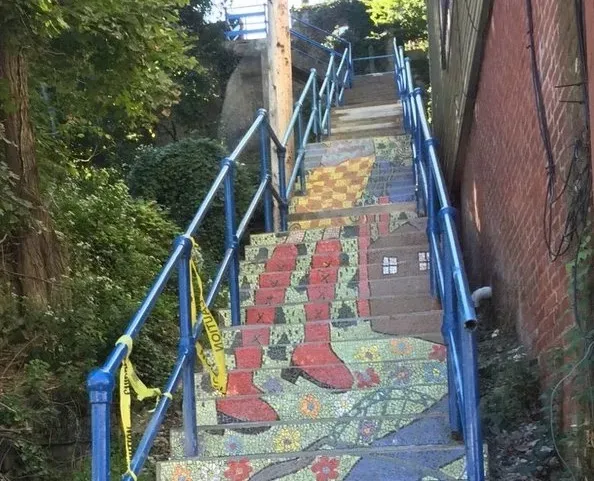
Pittsburgh is very proud of its steps. Every October, the South Side hosts a Step Trek fundraiser where you pay good money to drag your tired ass up staircase after beautiful staircase. Other neighborhoods do the same. Hell, there is a class on how to host a step tour in your neighborhood.
Years after that, when electricity was invented, Pittsburgh installed vertical trolley cars which they called inclines. They were like proto-escalators. There were once 20 of them dotting the hills. Only two remain these days: the Monongahela Incline and the Duquesne Incline, both up the street from me. It costs $2.50 to ride either.
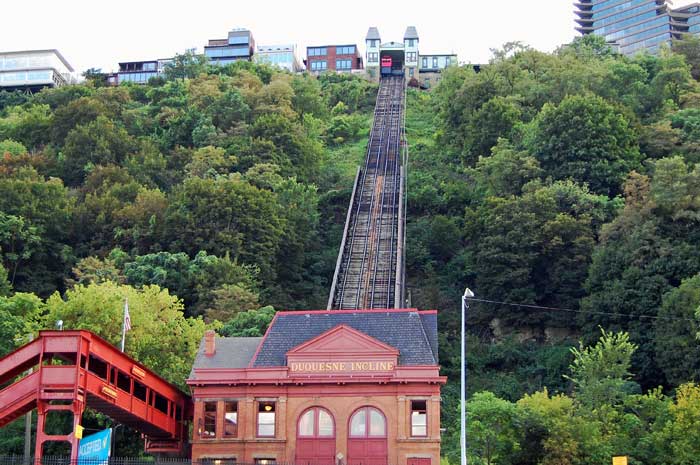
If you've ever tried to scale up a staircase this large, you'd know $2.50 is a friggin' bargain.
And if you can't go over the hill, you can always blast your way through it.
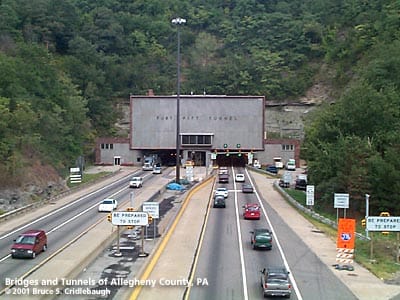
Pittsburgh has 19 highway tunnels within its city limits, more than any other US city. The natives will tell you to stay far away from the tunnels at rush hour, but if you live in the western burbs, there are very few other options. The Duquesne Incline won't take your car, dude.
And that's not all. Now let's get really creative. Rather than going all the way up or all the way down a hill, why not just connect them halfway up ... with a bridge?
And so Pittsburgh built bridges. Over 400 of them. More than any city on Earth, including Venice. (Are you sensing a pattern here?)
It would be ambitious enough just spanning the three rivers: the Monongahela, the Allegheny and the Ohio. And there you have some beautiful bridges, including 6 of them in my neighborhood over the "Mon": Smithfield, Fort Pitt, the 10th St bridge, the Liberty, the Birmingham, and the Hot Metal. But many, many more of the Pittsburgh bridges span neighborhoods. Here's a good example up the street from me, the PJ Mcardle Roadway:
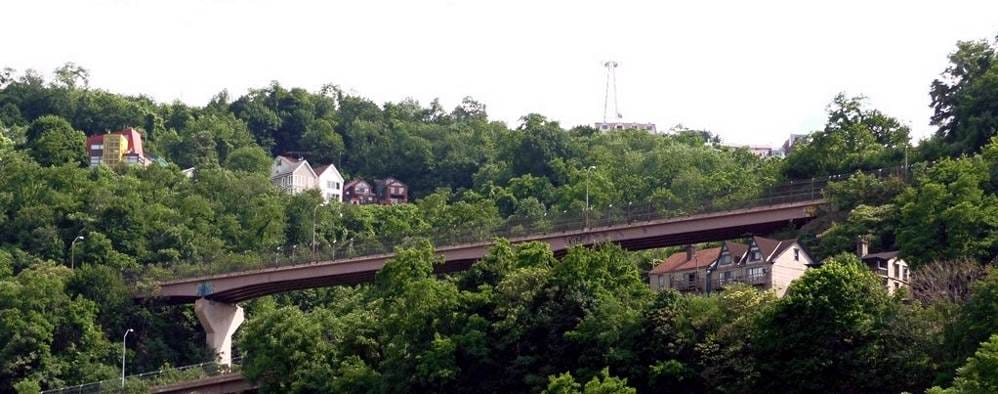
The span leaps over train tracks and almost an entire neighborhood, and the road is for cars and the Pittsburgh Subway (such as it is - that's a story in itself which I'll tell later).
OK, so waste hours of your Pittsburgh life trudging up steps, speeding through tunnels, tiptoeing across bridges. Finally you are home. Do you get a respite from all this senseless verticality?
And Also In Your House
Au contraire, mon frere.
Pittsburgh has its own domestic verticality. I first noticed it in rural areas of Pennsylvania that I have visited over the past 15 years. Even houses in small towns were built upwards and smashed against the sides of other houses down a block. Each is connected with an unholy tangle of telephone and electrical wire to its neighbors.
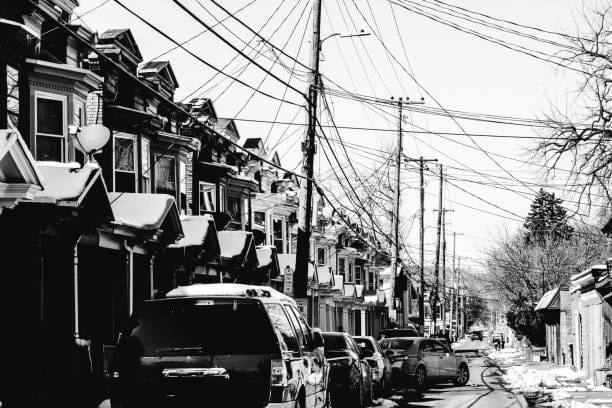
As it is in rural PA, so it is in Pittsburgh, and even more so. To give you an idea of how prevalent: In our April house-hunting spree, Amy and I looked at 10 places in Pittsburgh. Only one of them was a ranch.
When people ask me to describe the house we ended up in, I say, "Just take our Ithaca house and turn it 90 degrees." It is 4 stories tall, but narrow and shallow
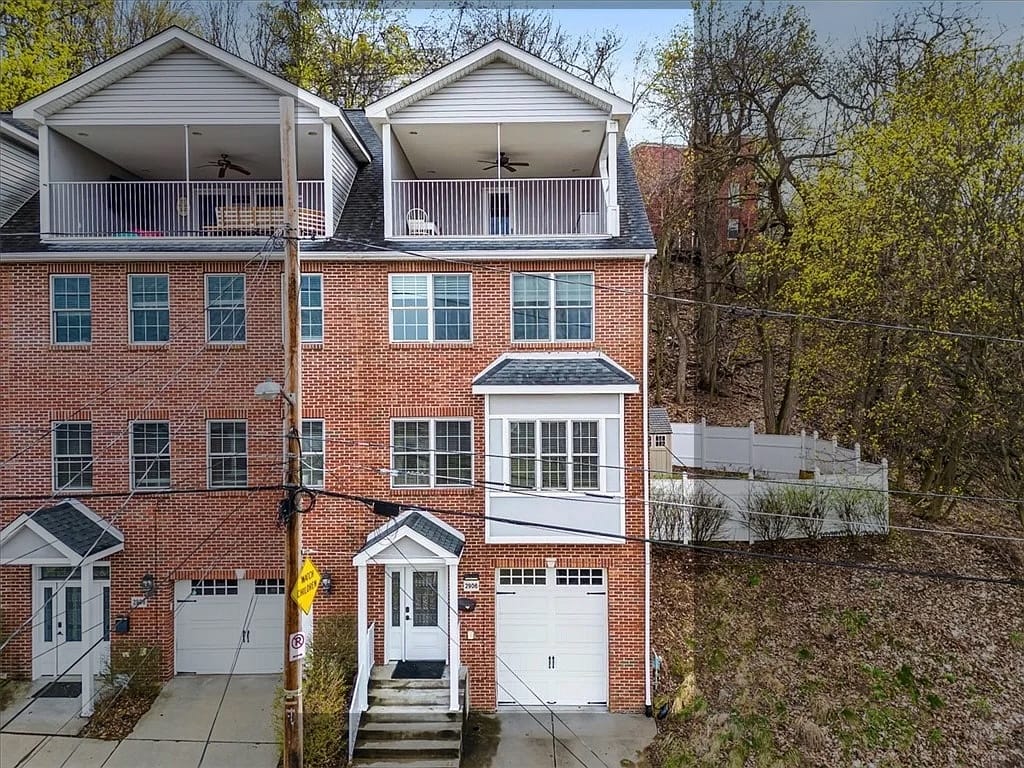
Each story basically has two rooms and a bathroom. Yes, that means this house has three bedrooms and four baths. The math sounds weird until you have to go to the bathroom ... and thank the lord you don't have to go up or down steps!
In our case, the verticality is necessary ... our backyard is a cliff. Thankfully it's a cliff going up not down, so we can bump into it, but we can't fall off it. (There's a balcony for that!). Still, if we wanted to build an addition, it would mean tunnelling through solid rock. A quick check of the Time Life Home Repair and Improvement Series reveals that is not a weekend project.
The vertical row house is a common thing in Pittsburgh, and it gets you some nice benefits:
- There is no shared hallway, so you don't bump into your neighbors
- Most of them have a balcony on the top floor with a pretty nice view, from which you can drink cocktails and watch fireworks (which happen often in Pittsburgh - our realtor put it, "someone sneezes and they set off fireworks.")
But there is the problem, which everyone points out in the first 2 minutes of us describing our house,
"How do you deal with all those stairs? You're old!"
Gee thanks, Captain Obvious. But here's the thing. Climbing the stairs every day, for every little thing makes you fit. You don't have to be fit to live in a vertical house. You just move in and let nature take its course.
Let's say you're going out to the gym, and you're slipping on your shoes on first floor. You think, "Oh crap, I left my headphones on the top floor." You trudge all the way up three flights of stairs, grab your headphones, and then you realize ... your workout is done for the day! No need to go the gym now. You head to the balcony for a cocktail and some fireworks.
Somewhere Up There
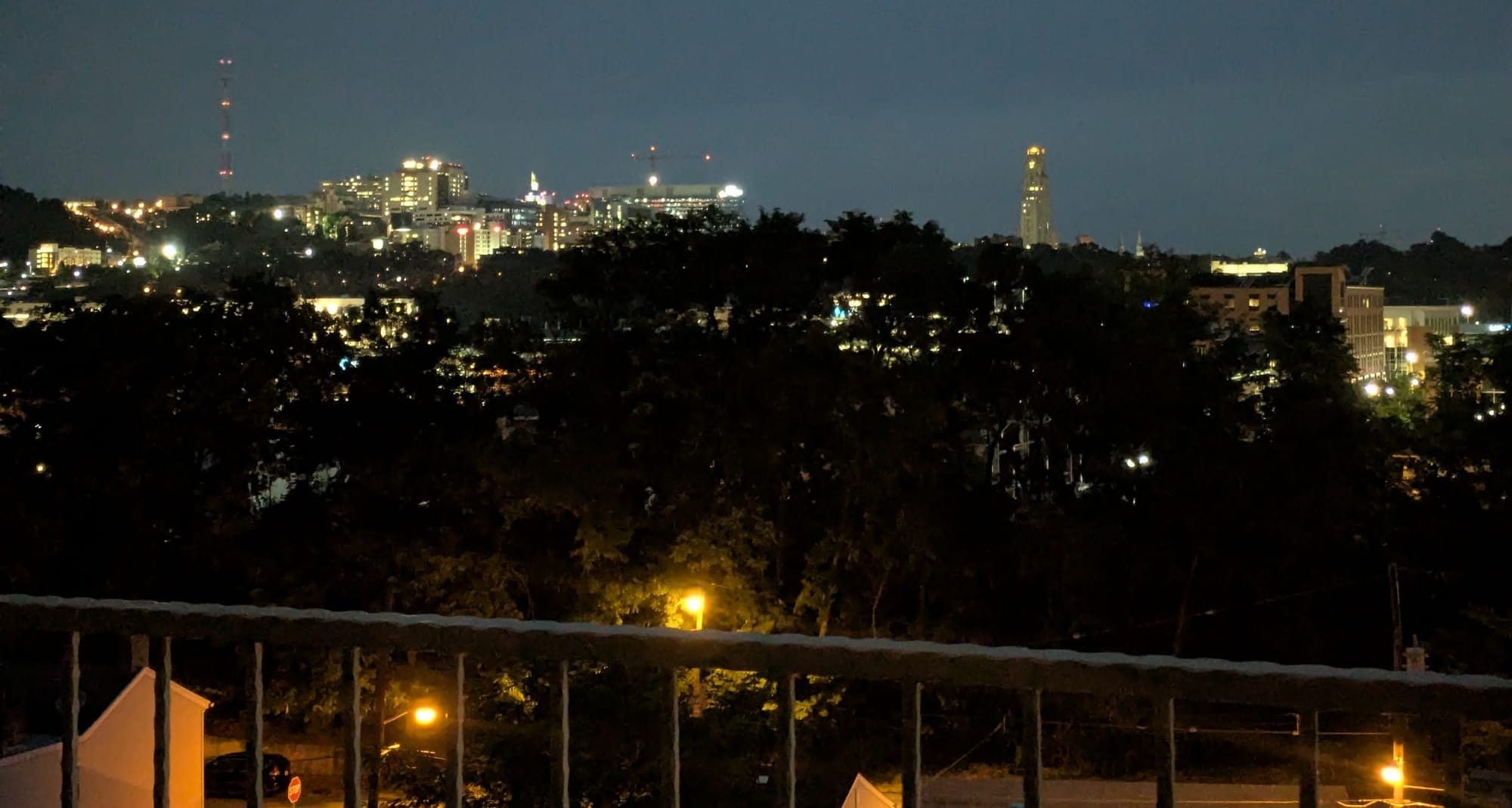
Did I mention I am afraid of heights?
I will not ride a Ferris Wheel. Driving on a curved , elevated on-ramp makes me nauseous. In the top floor of a skyscraper like the Willis Tower, I hug the wall, not daring to venture close to the windows looking out over Chicago. I flat-out refuse to go to the top floor of the Freedom Tower in New York City.
So WTF am I doing here in Pittsburgh, where you are constantly on the precipice of something? Why not a city like Houston or Phoenix where the land is flat and unlikely to upset my stomach?
🤷♀️ I think it's the same indescribable pang that made the early Yinzers stop and build a city on inhospitable terrain. Hell, I'm 60 years old. There will be plenty of time for fearfulness and anxiety when I'm pushing up daisies. When the scenery is weird and interesting ... and beautiful ... you can get over your fear.
You still won't get me on a Ferris Wheel though.
